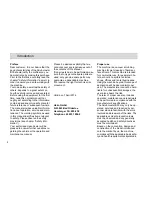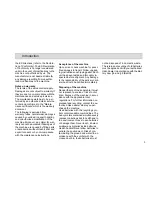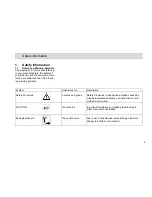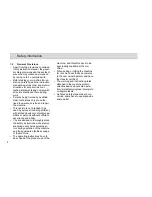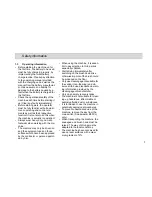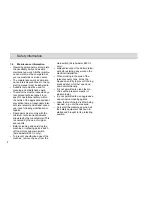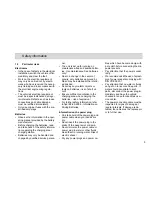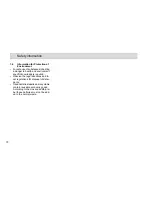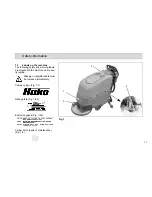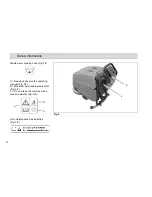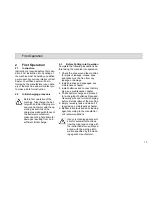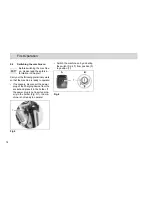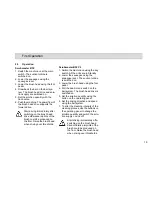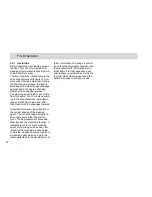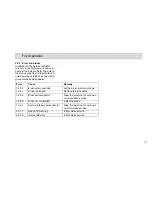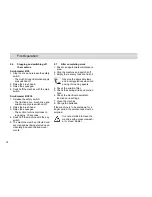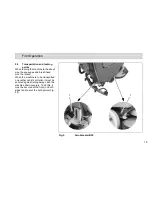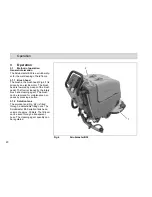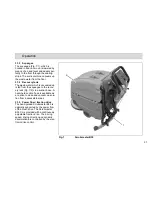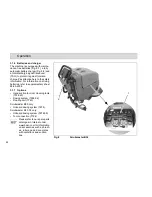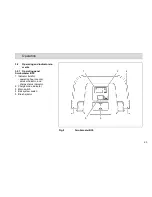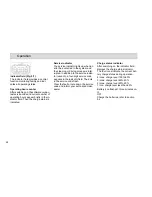
9
Safety information
1.5
Particular risks
Electronics
• In the case of defects in the electrical
installation, switch the vehicle off im-
mediately and clear the fault.
• Work on the electrical equipment
may only be carried out by electri-
cians who have received the neces-
sary training and in accordance with
the electrical engineering regula-
tions.
• The vehicle's electrical equipment
must be inspected/checked at regu-
lar intervals. Defects, such as loose
connections and cable damage,
must be rectified immediately.
• Only use original fuses with the pre-
scribed amperage.
Batteries
• Observe the information in the oper-
ating manual provided by the battery
manufacturer.
• Before charging the batteries, read
and take heed of the safety informa-
tion regarding the charging area/
charging station.
• Batteries may only be handled and
changed by qualified service person-
nel.
• The unit is set up for running on
maintenance-free and sealed batter-
ies. Use maintenance-free batteries
only!
• Due to a change in the center of
gravity, only batteries approved by
Hako may be installed at the intend-
ed position.
• Never lay any metallic objects or
tools on batteries - risk of short cir-
cuit!
• Ensure sufficient ventilation in the
charging area when charging the
batteries – risk of explosion!
• For further safety information, refer
to flyer 88-60-2556 - Information on
Driving Batteries.
Information on the power plug
• Only take hold of the power plug and
power cable when your hands are
dry.
• Never insert the power plug in the
socket if the base is wet or damp.
• Never immerse the power cable or
power plug in water or other fluids
clean them in running water. Risk of
electric shock!
• Dry any power plugs and power ca-
bles which have become damp with
a dry cloth before connecting them in
power sockets.
• Pay attention that the power socket
is dry.
• We recommended the use of splash-
proof power sockets complying with
DIN VDE 0620-1.
• Pay attention that no water or fluids
can get on to live machine parts. If
water should penetrate to such
parts, disconnect the power plug im-
mediately and have the vehicle
checked at an authorized Hako ser-
vice center.
• The power connection cable must be
inspected for signs of damage at
regular intervals. If damage is de-
tected, the cable must be replace pri-
or to further use.


